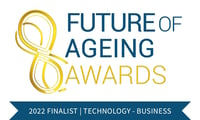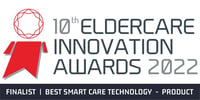Published in Hospital and Healthcare by Tammy Sherwood.
The implementation of digital technology for nurses has significantly increased over recent years - although there’s been a particular surge during the coronavirus pandemic.
Due to the outbreak of COVID-19, nurses across Australia and beyond have had to seek innovative alternatives to paper-based systems or out-of-date software to try and stay ahead of the game in terms of connectivity and collaboration, ensuring patients receive the highest quality of care while staying as safe as possible.
Undeniably, connected care – even before the virus – has been the next step in digital care technology and we can only expect to see further developments and enhancements in connectivity as we continue forward in this ‘post-pandemic’ landscape.
Flexibility has been fundamental in innovating new ways to stay connected and to help develop where care plans can be produced, monitored, actioned and updated in real-time by all who have access to technology. The negatives of using paper to plan and monitor care are well known, and the implementation of technology, especially during COVID, has enabled nurses and care providers to suit the users’ specific requirements, which, of course, can only lead to positive results.
In Australia, clinical software in the aged care sector has conventionally attempted to incorporate all things at once. Moreover, the traditional manual approach has become outdated and is notoriously time-consuming, and by the time the data has been physically updated across the care sector, the information could already be obsolete.
Furthermore, some care technology providers try to offer all-in-one solutions to different fields of care, whether that’s home care, retirement villages, catering, medication management, workforce management, and finance. Indeed, this practice has adequately suited some care providers in the past, though, if there is anything this pandemic has taught us it’s that we need to be as adaptable as possible, especially in our caregiving services.
Because of COVID, we have seen a surge in ‘connected care’ in digital technology. This effectively enables care systems to reduce duplication, minimise errors, and improve transparency with their products. With the room for error during the pandemic so minimal, interoperability has become an integral component of how our digital systems operate.
Any product that a care provider implements must incorporate agile technology that can be easily adapted to meet changing needs. Such a need has accelerated significantly because of coronavirus, as care situations can rapidly change and sometimes a product is incapable of keeping pace with current practice. The systematic advancement of technology, then, has played a fundamental role in improving the quality of care from nurses throughout the pandemic, as it has provided a solution in terms of timesaving, minimised errors and promoting better person-centred care.
Person Centred Software has set its sights on creating an environment where nurses are given the best possible resources to deliver high-quality person-centred care.
This, in effect, has alternated the structure of how care sectors operate, as there has been an increase in the need to seek products that integrate with other companies’ needs, especially with COVID still at the forefront of our care practices.
Moreover, the implementation of digital technology in care has produced an agile ecosystem where one can partner the other with best-in-breed systems for their respective fields of care, providing nurses with an array of alternative strategies to deliver the best possible system to the specific criteria of care.
Overall, digital care technology will continue to evolve and incorporate more interoperability, while the enhanced connectivity and collaboration that has arisen from such technology will continue to benefit our nurses further.











